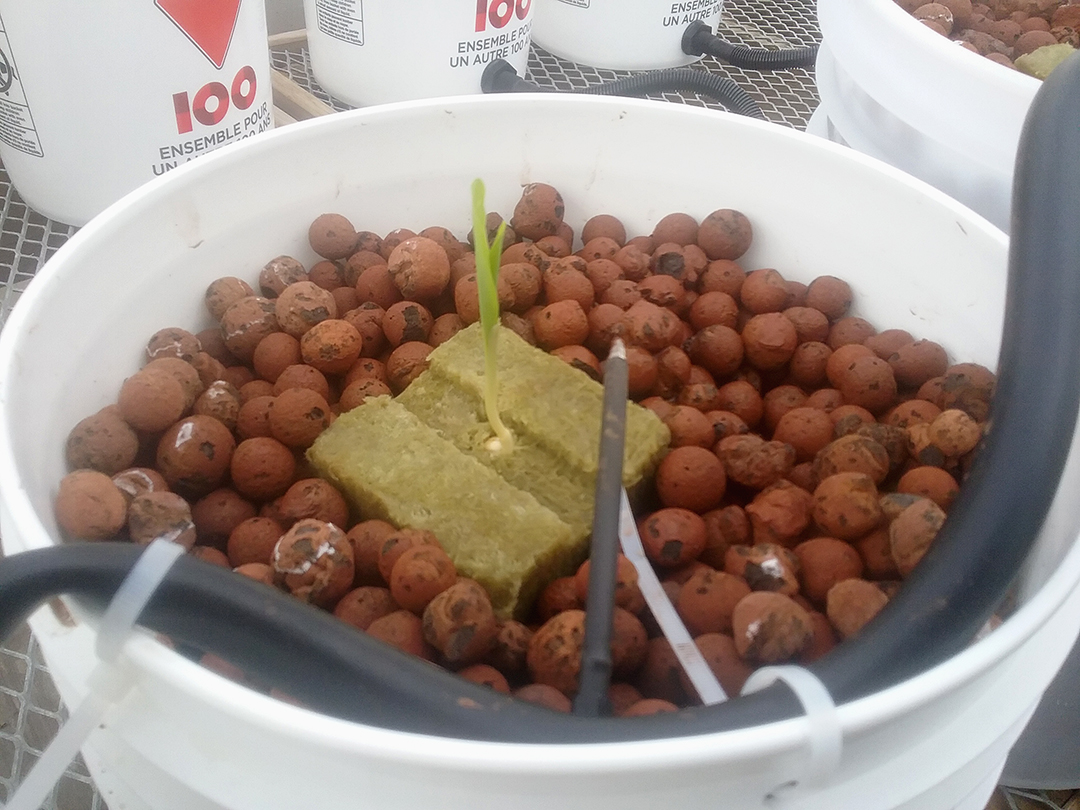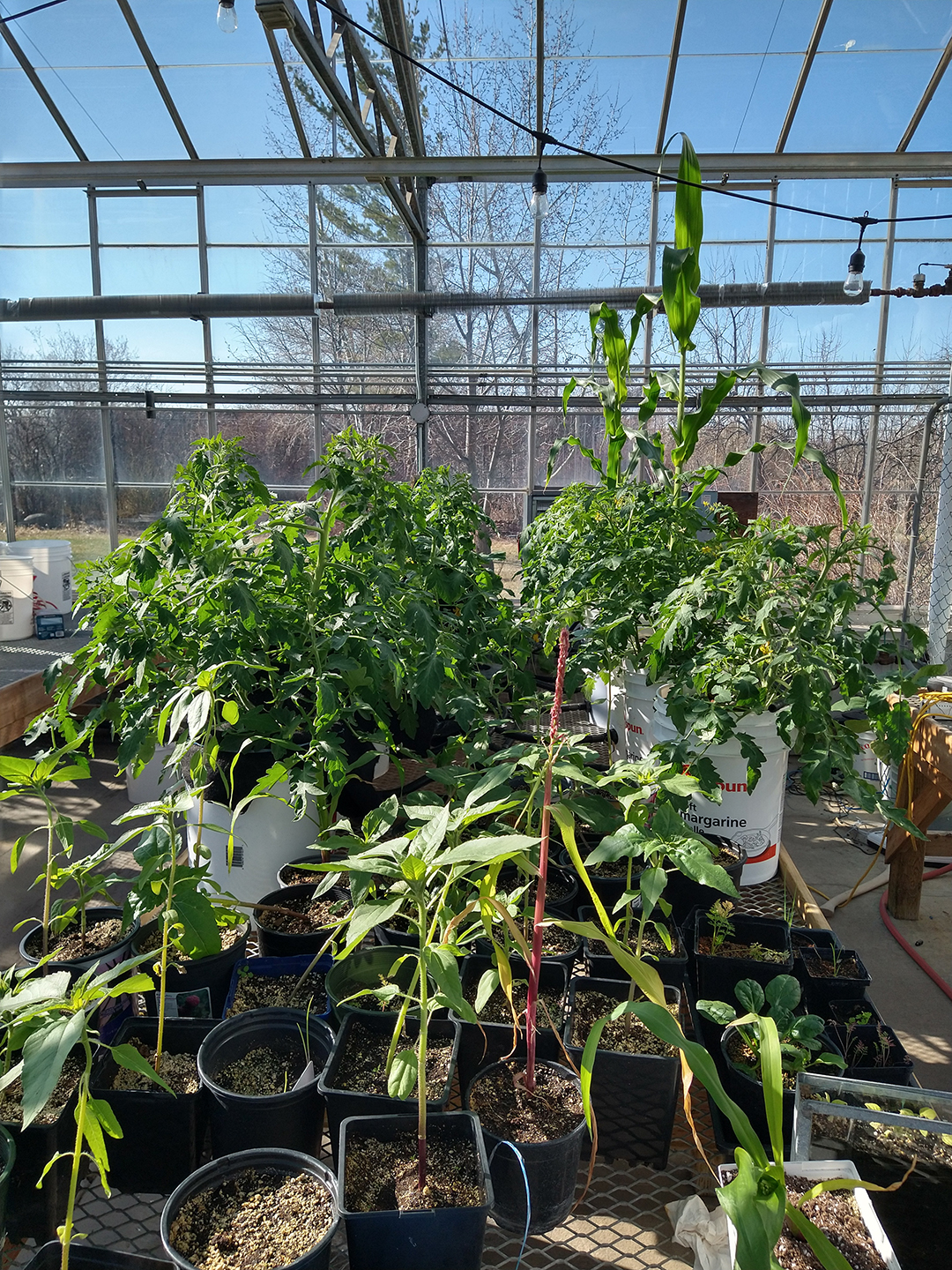
W.P. Wagner School of Science and Technology, Edmonton, AB
Grant term 2020-2022
W.P. Wagner High School is in South East Edmonton and has 1500 students. W.P. Wagner High School teaches Grades 10-12. Although we are still not serving food at our school, we have taken some steps to ensure food growth on site for future salad bars when our school starts serving food again. In our Natural Science class, we have always had a massive amount of freedom to pursue whatever projects we are interested in. All of us were really interested in Hydroponics— the process of growing plants in varying media without soil— and the system behind it.
Within our class, we have also had the privilege to explore Deep Water Culture systems (DWC) and grow several types of vegetables. A DWC system is another branch of hydroponics, in which the roots of the crops are submerged within a high nutrient solution that is constantly oxygenated by a pump. Combining these experiences, our class set off on the journey to begin a new project that would soon become the highlight of our year.

Similar to a DWC system, our class was able to research a method of hydroponic growing called a Dutch or Bato Bucket system. The difference is that a DWC system is contained in a single bucket; there is one pump and one reservoir per plant. A dutch bucket system, however, is able to combine multiple buckets together to connect them into one system. This means that we are able to use one reservoir and one pump for multiple buckets, therefore, lowering the price to grow the same amount of plants. This is done by connecting all of the buckets into one loop with hosing. Water is able to reach each plant through a feed line, and ultimately cycle back down to the reservoir through a drainage line. Figuring that this would be a great option for our class, we began to learn more on how to make it work.
The process of finding if we would be able to do a dutch bucket system:
Although the project sounded inviting, we had to complete a great deal of research to guarantee that we had enough tools and knowledge in order to make this project work. This research included reading articles about dutch bucket systems which have already been made, and specific components regarding these systems. Another way we were able to expand our knowledge of dutch bucket systems was by watching videos of people explaining their systems, and how they were able to create efficient and established buckets. We needed to evaluate many aspects of the system such as the proper material to build it, where we could get the materials, what plants work best in it, etc. We ended up deciding to use two different types of hosing to connect 8 five gallon buckets together, which we would use to grow fruiting plants. After we decided upon all of this, we moved on to actually assembling the buckets themselves.
Building and testing:
The first obstacle we needed to face was where we were going to get the buckets from. We ended up getting the buckets from two sources: students and companies who were willing to donate them to us. Next, we purchased the rest of the materials to build the system from the hardware store. Using our previous research, we proceeded to build the entire system using the following steps:
- Gathered all of our materials
- Drill one large hole about two inches from the bottom of each bucket— this is where we would attach the Thruhull* to assist with drainage
- Cut bilge into one foot increments and attach one segment of the bulge to the Thruhull— this was done for each bucket
- Connect the drainage bilge of each bucket to another one-foot segment of bilge using plastic tee pipe connectors
- For the first bucket, connect the bucket drainage bilge to the whole bilge line by a elbow joint, rather than a tee connector
- Connect the bilge together by the tee connectors to form a single drainage pipe
- Fill your reservoir with water and a pump and make sure it is working.
- If it is working, fill your bucket with your substrate and germinated plant.
- Replace water with solution
Once we had our basic premise finished we started running it. We inevitably ran into some problems. The main problem was with algae growth. It was growing rapidly in two areas: the reservoir and on the perlite we were using as a substrate. We fixed this by covering the reservoir with a lid and the perlite with fabric. This worked, because algae needs light in order to survive, and covering it blocked out the light the algae needed.

Growing plants
Currently, all buckets are growing vegetables which are beginning to flower and grow. The vegetables growing are:
- Many types of tomatoes including:
- Early Girl (indeterminate)
- Sub-arctic Plenty (determinate)
- Starfire Improved (determinate)
- Cucumbers
- Corn
- And we even have a mystery plant growing alongside a tomato plant
The buckets have been a great success, and we have harvested some cucumbers. The tomato plants are flowering and have a few fruits, but that will increase shortly.
We are pollinating the plants by using q-tips and shaking the plants to allow the pollen to naturally fall onto the female flowers.




